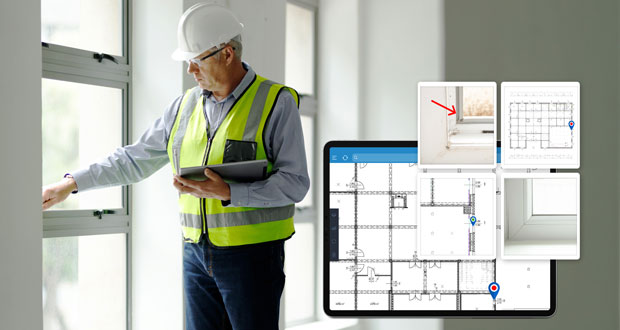PlanRadar, a leading digital construction, real estate and facilities management platform, has launched its latest whitepaper, ESG in the real estate industry. Primarily, it explores how ESG strategies are helping to drive investment within the construction industry across Europe and the role digital tools play in securing future finance.
From the outset, the White Paper highlights that ESG practices are more than just meeting regulatory guidelines, they offer sizeable business benefits. This could explain why 52% of private equity investors implement ESG as a strategy to boost asset value, and half implement an investment policy that includes ESG specifically.
The report draws on existing research from leading consultancies, including Deloitte, highlighting how ESG due diligence is making construction companies involved in low-carbon building and green property development attractive to investors. Recent estimations put global ESG assets at a value of more than $23 trillion.
One of the report’s key findings is that property owners focused on achieving ESG goals often experience higher ROI, and goes on to suggest the quicker sustainability targets are met, the faster the return. This has placed growing emphasis on integrating ESG strategies into the technical due diligence of real estate assets to reap greater rewards, including understanding a building’s current condition and the potential cost of repairs and compliance with building regulations.
However, the report also acknowledges that achieving this aim is no overnight fix since the integration process can be lengthy, relying on third-party expertise to evaluate data, compile reports and align objectives. It also comes at a substantial upfront cost, with evidence-based data, which shows processes and regulations have been correctly followed for safe and habitable buildings. ESG data collection and reporting is demanding, given the breadth of continuously emerging standards and regulations, coupled with maintaining robust records of project documentation, contracts, plans and protocols across fragmented project supply chains.
Commenting on the whitepaper, PlanRadar’s Co-Founder and Co-CEO, Ibrahim Imam, said: “ESG is becoming a key investment driver with investment memorandums set to encompass all ESG risks, mitigation strategies, associated costs, and assumptions identified during the due diligence process. Those in the property sector that take this corporate criterion seriously, and consider the potential of digital tools to support more effective record management, will improve their governances, boost social value and reduce negative environmental impact, allowing the market a much-needed confidence boost and safeguarding against economic instability.”
Maximising portfolio value
The paper also shines a light on how digital platforms can facilitate the integration of ESG-related data into technical due diligence by accurately collecting and reporting relevant information to precisely identify structural problems, inconsistencies and risks.
Investors with a portfolio of commercial properties often develop effective strategies for enhancing property value and energy efficiency by streamlining their maintenance costs. According to the research, the latest software enables quick cost estimation for building reconstruction and alterations, aiding investors in making informed decisions. In-depth technical data recording for real estate means the efficiency of processes such as due diligence is significantly increased.
PlanRadar Co-Founder and Co-CEO Sander van de Rijdt concluded: “While the taxonomy and regulations for ESG are still being developed, companies that implement effective strategies to monitor ESG now will open the door to a higher return on investment down the line. Comprehensive documentation of property assets, as part of technical due diligence, requires a lot of time. Digital solutions make this process much more efficient and help to ensure long-term value appreciation of assets, tenant satisfaction, and an overall increase in company value. They also provide a tamperproof audit trail to support alignment with increasingly stringent building regulations, giving stakeholders greater peace of mind.”





